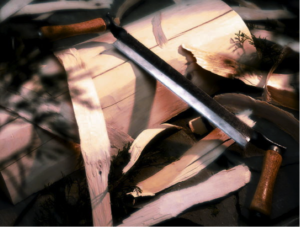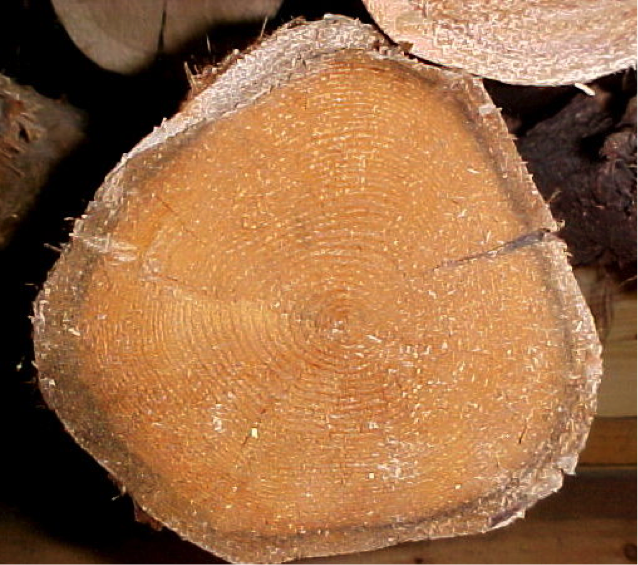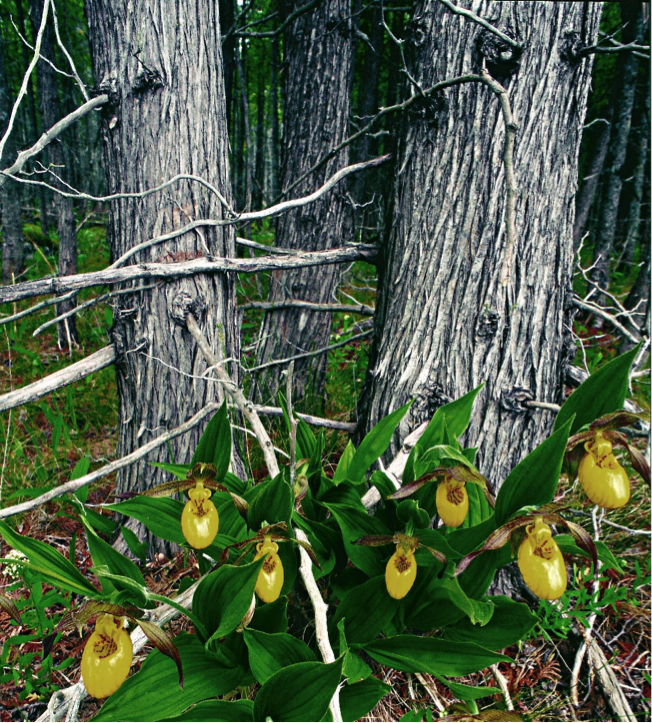Don’t Be a Sap!
 All trees have layers of growth commonly referred to as ‘rings’. A crosscut of a mature tree trunk, with outer bark removed, reveals two different sections of rings easily distinguished by color. The outer rings are sapwood, and are lighter colored. This is the part of the tree through which sap flows to sustain tree growth. Sapwood contains sap and water which, in order for the lumber to be used for building, must be carefully dried prior to use. Sapwood will shrink and crack more easily over time and is more susceptible to fungus and decay. While Sapwood rings are vital for tree nourishment, in its natural form it is not a good product for woodworking.
All trees have layers of growth commonly referred to as ‘rings’. A crosscut of a mature tree trunk, with outer bark removed, reveals two different sections of rings easily distinguished by color. The outer rings are sapwood, and are lighter colored. This is the part of the tree through which sap flows to sustain tree growth. Sapwood contains sap and water which, in order for the lumber to be used for building, must be carefully dried prior to use. Sapwood will shrink and crack more easily over time and is more susceptible to fungus and decay. While Sapwood rings are vital for tree nourishment, in its natural form it is not a good product for woodworking.

The inner, darker rings of the trunk are called the “Heartwood’, formed from old, “retired” sapwood which dries out over time and becomes the strongest wood for structural wood members and wooden home building products. Over time the tree “promotes” layers of sapwood to heartwood status, In the sapwood to heartwood conversion process, the sap stops flowing through selected layers of the tree. The tree pores fill up with organic matter and the cell walls change color, ultimately becoming dryer and stronger to form Heartwood layers. Heartwood naturally has less moisture and thus is more easily kiln dried. Experienced woodworkers will typically only use heartwood for home building projects – both structural and non-structural.
What is critical to note is that some tree species naturally have greater quantities of sapwood than heartwood. Having more sapwood in a tree trunk can mean that the wood producers must take additional steps to assure that the lumber produced is acceptable for building. Pine, for example, has a larger band of sapwood than does Northern White Cedar Likewise, each tree species differs in the rate at which sapwood is converted to heartwood. In some tree species, color differences between sapwood and heartwood are hard to determine, requiring an expert’s verification prior to harvesting for lumber. Species which fall into this latter category include Hemlock, Cottonwood, Aspen, the true firs and most Spruces.
The term “Heartwood” is derived solely from its position in the trunk, and not from an importance to the life of the tree. This can be seen in thriving trees where the heart is completely decayed. Some species begin to form heartwood very early in life – thus having only a thin layer of live sapwood. Yet other trees create wide bands of sapwood, and small central bands of heartwood. Thin sapwood is characteristic of such species as Chestnut, Black Locust, Mulberry, Osage-Orange, and Sassafras, and Northern White Cedar. While Maple, Ash, Hickory, Hackberry, Beech, and Pine (frequently harvested for structural lumber and log siding on some brands of log homes) thick sapwood is the rule, requiring drying before use. Still other trees never form heartwood at all.

Town + Country Cedar Homes uses only the heartwood of Northern White Cedar for our log homes, log finishes, timber homes, timber finishes, paneling, decking, stairs, railings and other luxury wooden home building products. Some may argue that the initial cost is more since there is less available heartwood to harvest from the tree. While this may appear true in initial construction costs, over the life of the log home or timber style home, the homeowner will have the advantage because Northern White Cedar home finish products are proven to last years longer than Pine or other sapwood products. With a Cedar heartwood product, there is less shrinkage or cracking with a result of less maintenance, plus less rot, less decay and a longer product life. Plus, White Cedar is just plain beautiful…



